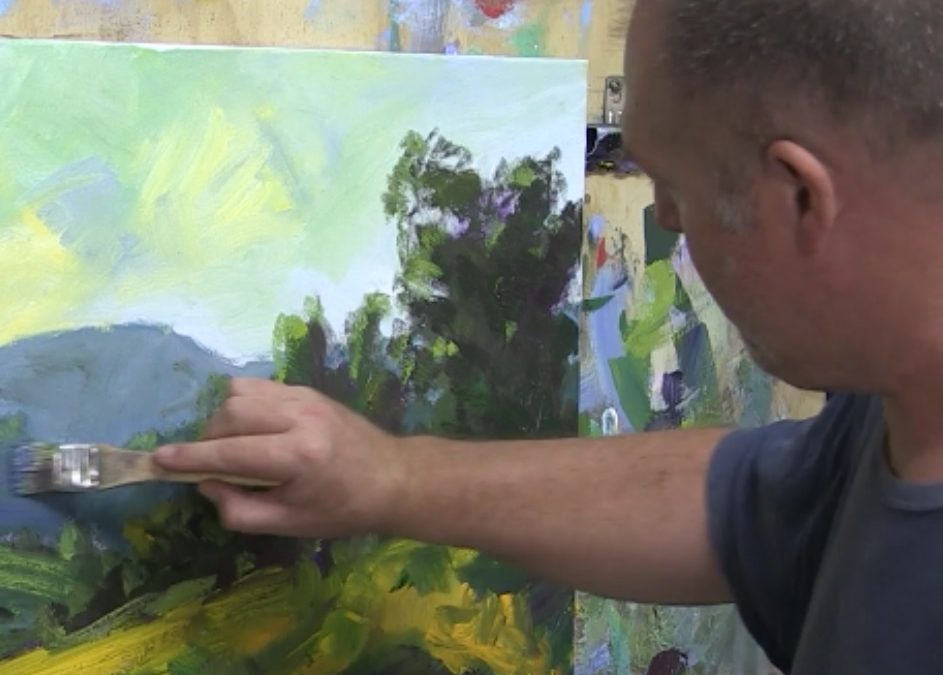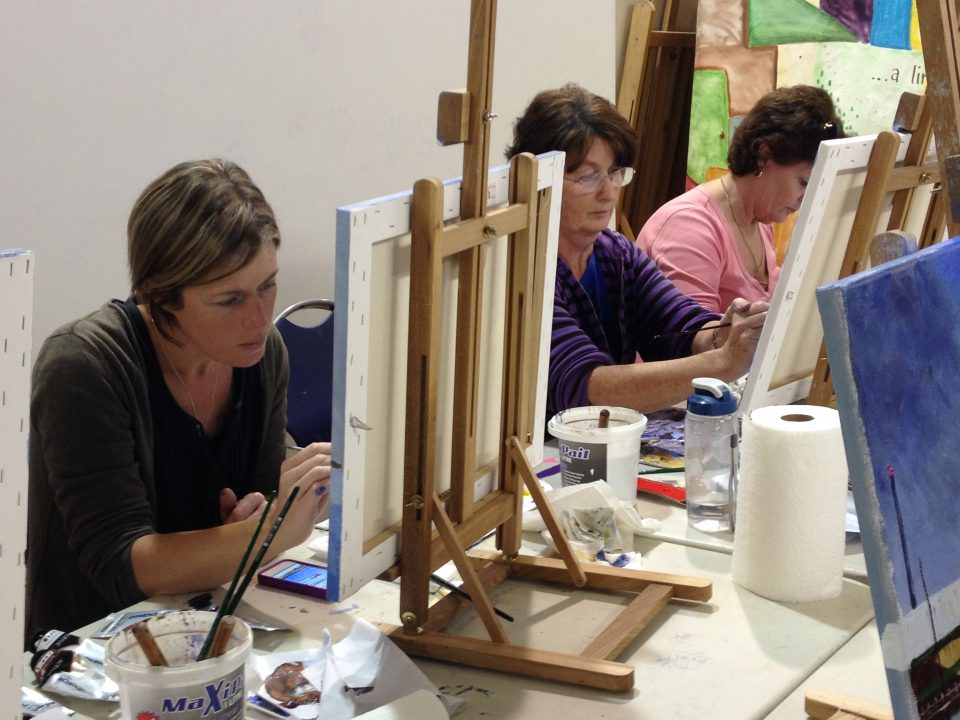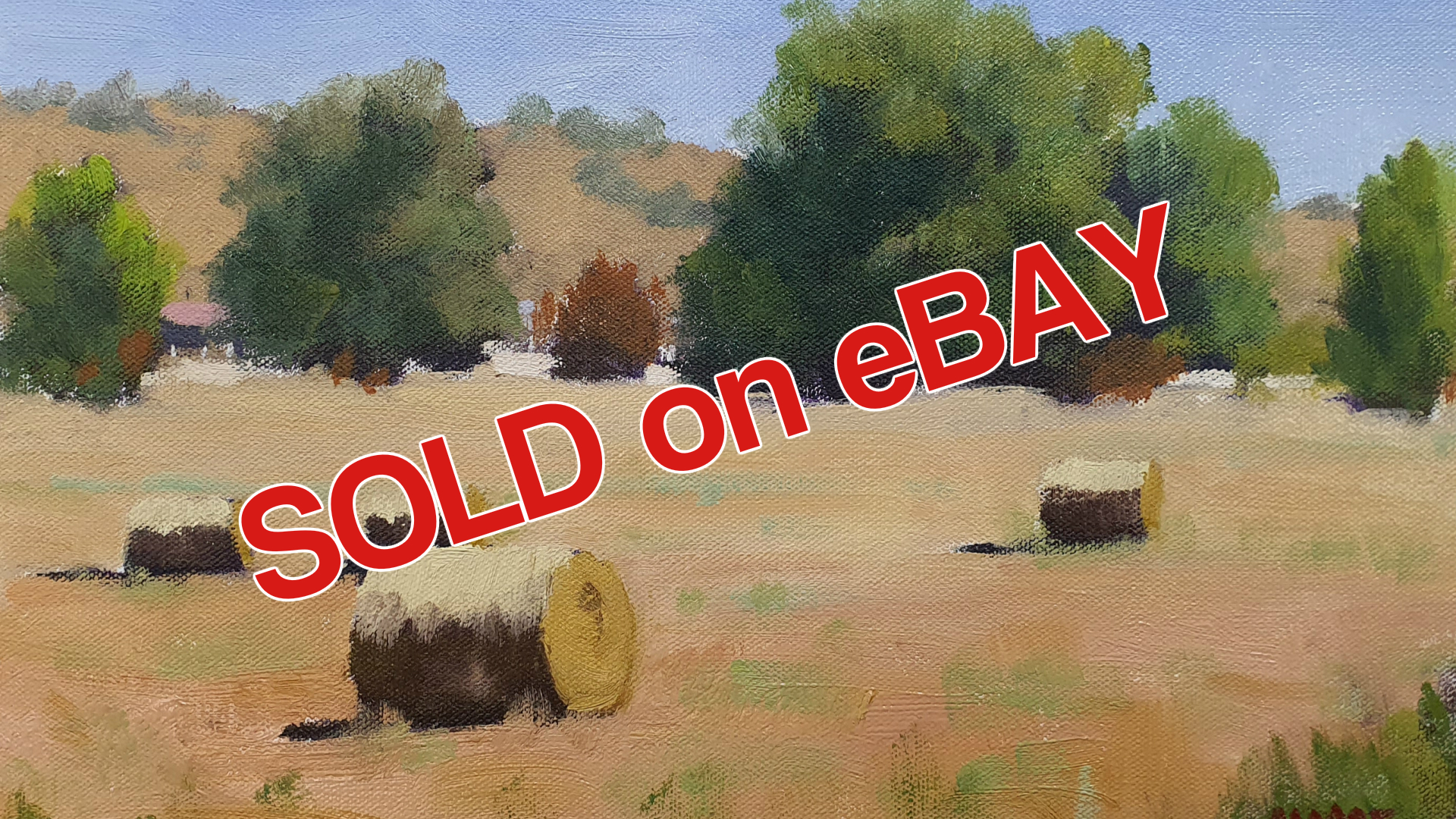
Selling Art on eBay
April 24, 2020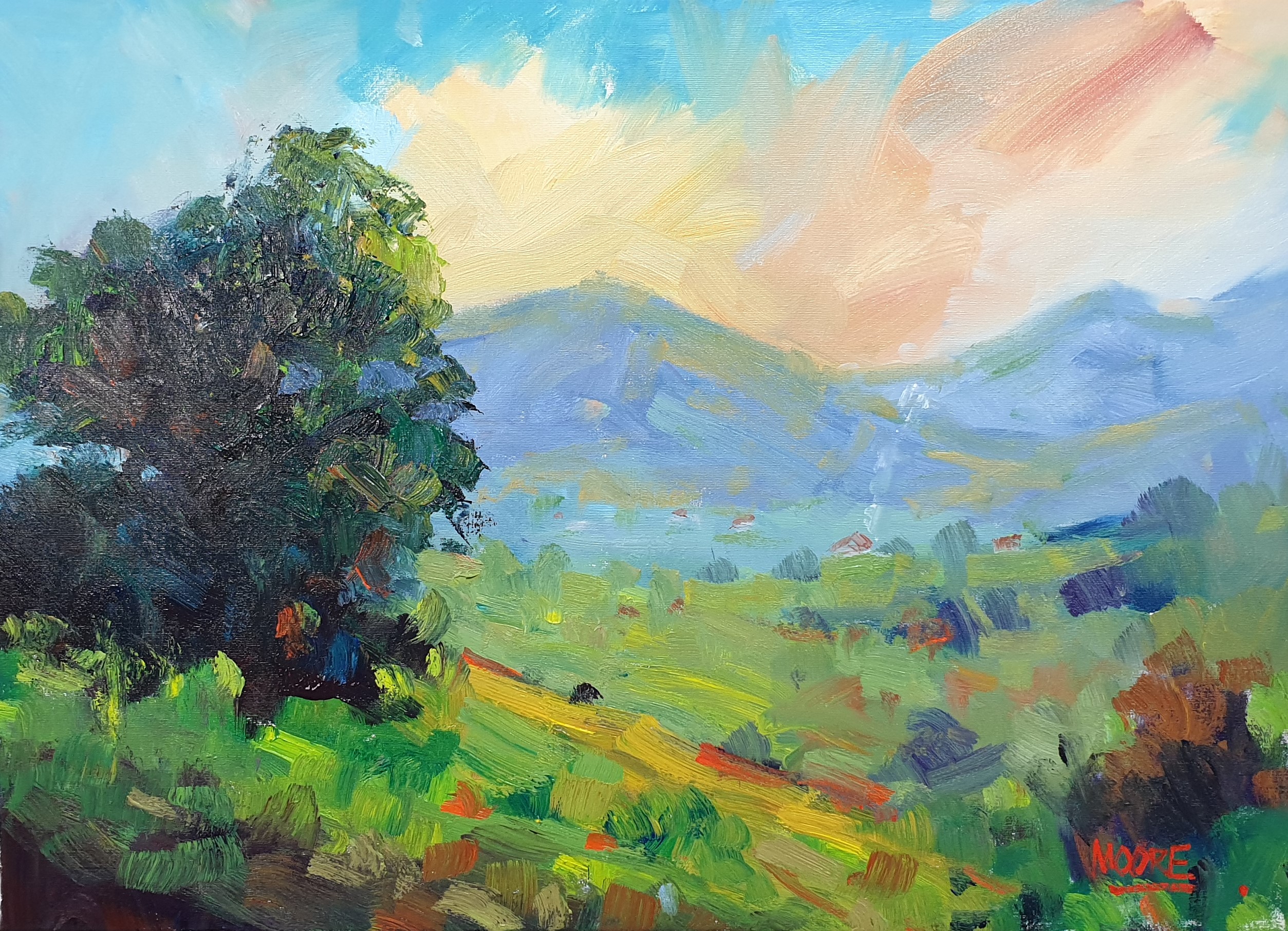
Daily Painting – Can It Help Improve Your Painting?
May 12, 2020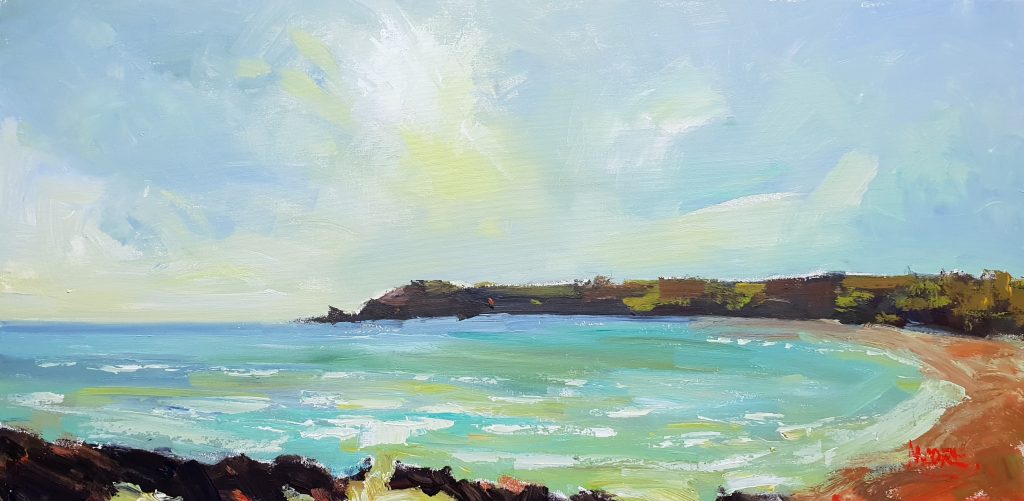
Acrylic Paint on Canvas
By Rod Moore
Acrylic Painting Mediums – When & How To Use Them?
If you have been painting in acrylics for any length of time you have probably run into a few problems like most of our students at the Learn To Paint Academy. The question of using acrylic painting mediums has probably crossed your mind.
Problems mostly to do with the drying time and difficulties in blending the paint. The fast drying time of acrylics is one of the advantages many students find over painting with oil paints however it also creates issues.
In this article we are going to look at acrylic painting mediums and discuss when and how to use them to improve your paintings.
First of what is an acrylic painting medium in the first place?
According to an article posted on My Modern Met …
A medium is a substance that is added to paint to change one or more of its properties. In acrylic mediums, these mixtures can be incorporated into the pigment to lengthen its drying time, make it thicker, or change the texture. Mediums are bought in addition to paints.
Source – My Modern Met article
I should point out before we go any further in this article my position on Mediums for either oils or acrylics. When i teach beginners who are just getting started painting with the Moore Method of Painting my goal is to have them simplify the painting process right down.
That’s why we use 3 steps, 3 colours and 3 brushes and rarely use a painting medium. From experience I have found that the more things you introduce the harder it is for beginners to make progress.
However as many our students have been developing their skills with acrylic painting there comes a time when introducing mediums does make sense.
So the obvious question then becomes …
Which Acrylic Painting Mediums To Use?
This will depend largely on the brand of acrylic paint you are using. Every manufacturer of acrylic paint will also have a range of mediums to go with them. It makes sense to use the mediums that go with the brand of paint you are using.
At the Learn To Paint Academy we recommend the Atelier Interactive brand of acrylic paints
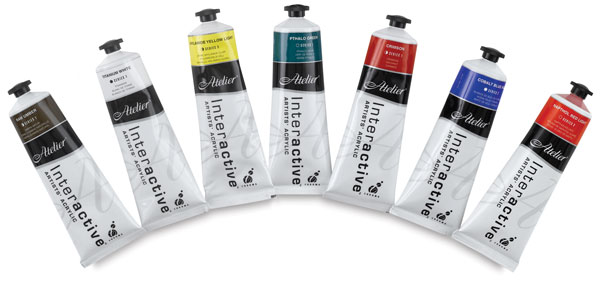
There are a few reasons why recommend the Atelier Interactive range:
- Thick and luscious paint that feels like oil paints
- Strong pigmentation which gives rich vibrant colours
- Professional grade paint at an affordable price
- Extremely versatile for a variety of applications
But there is one other big reasons why we prefer and recommend the Atelier Interactive range of acrylic paints …
They Can Be Re-Hydrated After They Have Dried!
You read that right … the Atelier Interactive range of paints can be re-hydrated after they have already dried. In other words they can be kept wet for longer so that you can keep working into them like you would with oils.
But even better than that … after they have dried out you can reactivate them so they are wet again and work back into them. This is ideal for fixing issues, making adjustments or improving any blending you want.
The Atelier Interactive paints have a medium known as Unlocking Formula. This video from Dick Blick explains how the unlocking formula works:
So the unlocking formula is a huge advantage that doesn’t exist with other brands of acrylic paints. It gives you so much more freedom to use the acrylics to achieve the end result you are looking for.
Adjusting The Viscosity Of Acrylic Paints
One of the most important uses of a medium with acrylic paints is to adjust the viscosity of the paint. Out of the tube the Atelier Interactive paints are thick and luscious like an oil paint but this doesn’t suit every stage of the painting process.
Note – Student grade paints tend to have a thinner runnier feel to them which makes it difficult to achieve quality painting results. If you can afford it try out the Atelier Interactive paints. Even with just a few basic colours.
You will want to use mediums to adjust the viscosity of the paint at different stages of the painting process.
During the drawing and block in stage (Steps 1 and 2 of the Moore Method of Painting) you want the paint to be thinned down. With the paint thinner it will flow a lot easier on to the canvas. This is important during the early stages of a painting as we want to get the paint down fast.
Now I have taught in the Learn To Paint Academy courses and projects to use water to thin the paint down and this works fine. There are however mediums available to do this with every brand of acrylic paint.
Watch this video on the range of mediums to adjust the viscosity of the Atelier Interactive from the founder of the company:
There is also a Clear Painting Medium that you can get with the Atelier Interactive range of paints. This enables you to thin the paint down without losing any pigmentation.
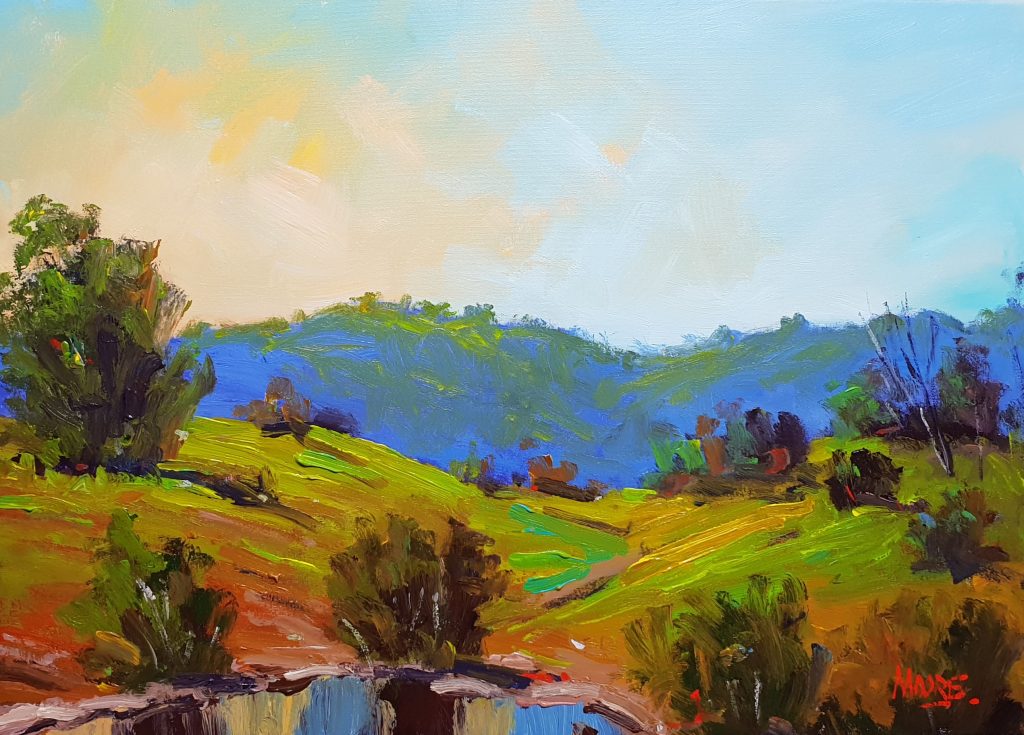
Acrylic Painting
By Rod Moore
Slowing The Drying Time of Acrylic Paints
One key to working effectively with acrylics is to know how to control and slow the drying time of acrylics. In the past I have taught that if you use thicker paint it will take longer for it to dry. This will give you more time to work with it and blend it.
However there are mediums you can use for this as well.
In the Atelier Interactive range there are two different mediums you can use. One is Slow Medium which as the name suggests slows down the drying time. This is best used with a water sprayer by applying some of the medium into the water spray bottle.
The other one to try is Retarder (common to most brands of acrylics). The Retarder can be used to dip into and added to your painting mixes. A caution though … you only want to use small amounts of the retarder. If you use too much then the pigment can become unstable.
Watch this demonstration from the late Mitch Waite on using the Atelier Interactive paints:
Varnishing Your Acrylic Painting
When you are happy with your painting and decided it is finished the final thing you will want to do is varnish it.
Varnishing a painting adds a protective coating to stop the paint being damaged. It also helps to bring back the vibrancy of acrylics which can look a little dull when they dry.
Typically varnishes will come in a matte, satin or gloss finish. The Atelier Interactive paints are designed to be satin in their finish so if you want a more gloss or matte look you can adjust it in the varnishing stage.
When you apply the varnish you first want to make sure the painting has fully dried. It is best to wait a few weeks with acrylics. Then use a soft foam brush and apply the varnish in thin even coast across the painting surface.
Most likely you will want to apply two to three coats of a varnish. Just make sure each coat has had a chance to dry before applying the next.
When Should You Start Using Acrylic Painting Mediums?
I mentioned earlier that we typically don’t recommend using mediums to those who are just starting out painting. So if you are in the very early stages then hold off on using mediums for the moment until you get handle on the basics.
When you feel you have a good understanding of mixing paint and how to apply it on to the canvas then you might be ready to start using mediums.
Don’t try and use them all at once though. As I have said many times the biggest thing that holds back beginners is they over complicate things with too many colours, brushes, mediums and so on.
The first mediums I would add would be one to adjust the viscosity of the paint, and one to slow the drying time of the paint down to give you more time to work with it. Of course if you do decide to use the Atelier Interactive paints then you will also want the Unlocking Formula.
If you are using a different range of acrylic paints then jump on to the website of the manufacturer and look at the information they provide on their various mediums.
As with anything to do with painting you need to give it time to learn how to use the various mediums. So be patient and most importantly have fun with your painting.
Click Here To Save $60 On Acrylic Painting Starter Course Bundle


